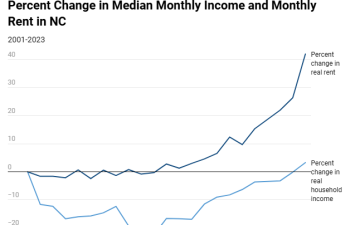What we deliver
We help people understand the population changes facing their communities
We help you understand what data you need, and where and how to access that data.
We use rigorous methods to translate the data and provide meaningful context.
We strengthen the capacity of your organization to communicate data-driven ideas.
Using datasets and primary research, we provide accessible and customizable insights in whatever format makes the most sense for your team. Learn more about our work and explore stories of how our clients use our tools and expertise to inform their decisions.

A large utility company was planning to expand their operations and add hundreds of new field employees within a year. However, existing field employees were simultaneously leaving the company at a high rate. This added significant costs and hindered the organization’s capacity to scale operations. The utility company needed to understand why their current employees were leaving and how their turnover rates compared more broadly to industry trends. Through analysis of the utility company’s employee databases and conversations with their executives, Carolina Demography developed a profile of employees most likely to stay (and, conversely, those…

Since 2011, the Center for Galapagos Studies (CGS) has marshalled the University of North Carolina at Chapel Hill's research strengths to address the complex human and environmental pressures in the Galapagos archipelago, a UNESCO World Heritage Site and birthplace of evolutionary science. The archipelago’s growing local population and burgeoning tourism trade have created ongoing tensions between resource conservation efforts and economic development. In 2007, the Galapagos Islands were labeled “at risk” by the United Nations from threats associated with population growth. UNC and their partners at the Universidad San Francisco de Quito (USFQ) work on…

In 2014, the Wake County Board of Commissioners asked Carolina Demography to estimate when their population would surpass one million residents. In addition, they asked us to contextualize the estimated characteristics of their millionth resident in a broader discussion of past trends, current demographic characteristics, and a look to the future of Wake County. In 1910, Wake County’s population was 63,229. Although Wake County has grown steadily since then, it did not reach 100,000 residents until 1940. Over half a century later, in 1994, Wake’s population surpassed half a million. The establishment of Research Triangle…

This blog post expands on a previous blog post that examined housing cost burden across NC by focusing on the disparities between housing cost burden for homeowners and renters. In North Carolina, 66.8% of occupied housing units are owner-occupied, while…

In recent years, housing has become a hot-button issue both nationwide and in our state, as many people struggle to find secure, affordable housing options. David Rouse, Ben Hitchings, and Anita Brown-Graham of the UNC School of Government’s ncIMPACT Initiative…

In recognition of Veterans Day, Tuesday, November 11th, we are providing some statistics about North Carolina’s veteran population. The most current version was published on November 12th, 2025, with information from 2023 and 2024. Please note that the county veterans…
Your support is critical to our mission of measuring, understanding, and predicting population change and its impact. Donate to Carolina Demography today.